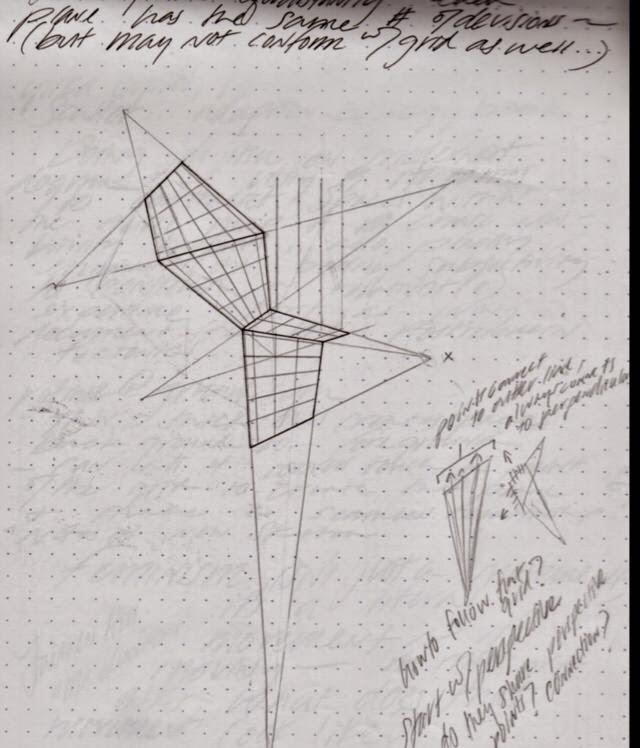After moving back to Austin, Texas with my family, I have finally submitted all of the applications for my artist residencies. While waiting to hear back from the residency programs, I have decided to do my own residency at home! Along with catching up on academic reading, I've taken on the challenge of learning how to use a CNC router (ShopBot) in order to carve the surfaces of my wood panels with greater complexity, accuracy and ease. Currently, I'm taking CAD classes at the Austin Tech Shop and am loving it! Ultimately, I'm very excited to unlock the potential hidden within my new Circuit Topology designs. The Circuit Topology paintings will have both additive and subtractive elements interacting within the surface of the wood panel. My goal is to maximize the potential of surface by using paint to create the illusion of contradictory dimensions between sculptural and architectural spaces. I will employ painting as material and illusionistic adjustments of dimensional visibility on surface.
Elevation Map
Note to self: making elevation
maps of drawings with contradicting perspectival planes is a bitch. Can I
solidly claim that any particular depth is absolute in a relativistic space? It's all a bunch of goddamn gradients.... These drawings are composed of age-old formal techniques,
but they are employed in a very contemporary, postmodern fashion. In a
nutshell, I created a series of interconnected 2-point perspectival planes by
blending them into a flat Cartesian grid. By extending the perspectival lines
to their vanishing points, I was able to intersect points on the flat grid and
create a series of intertwining circuits between planes. Altogether, it is a
shape shifting system that generates optical tension between illusion and
flatness - and within that tension, the space contradicts itself. Because of
the connections the circuits create, the highest elevations in the drawings are
also the lowest. So, when attempting to map these high and low points, it
becomes difficult - there are no clear binaries and boundaries of high or low! Instead, the elevation shifts within a delicate gradient. Now that I am
learning to use a CNC router (programmed carving machine) to carve my designs
for me, it is going to be difficult to create vector files that re-imagine this
drawing as a relief surface. The vectors are solid shapes, you see.. so I have
to be extra-wise in isolating which elevations I will have the router carve
into the panel. It's not a simple stair-step, because the drawing is very
dynamic and contradictory. I could carve smoother gradients of relief using a
program called 3D Carve, but I'm actually excited by the challenge of finding
solid shapes of elevation within this highly organic geometry.
Isolating Elevations
Programming Vectors
...More soon! Perhaps this process will also be applicable to my organic circuits? It will be interesting to see how the digital mind evolves my process. I'm a cyborg artist.
Here are some additional notes:
P.S. I finished my sketchbook! Time for a fresh dotpad ~~~
Also, Alice Aycock and Charles Simonds are my new heroes:
Charles Simonds
Alice Aycock
Still workin' on Haraway:





























